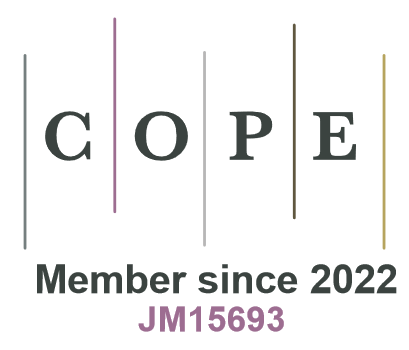Effects of psychological stress on skin and hair pigmentation in Polish adolescents
DOI:
https://doi.org/10.2478/v10044-012-0001-7Keywords:
skin melanin index, hair melanin index, perceived stress scale, PSS–10, dermaspectrometerAbstract
The effects of psychological stress, gender and age on hair and skin pigmentation levels were evaluated in the reported study. The material included Polish high-school and university students aged 18–22 (in the age range 17.50–22.49). All subjects who had sunbathed or used tanning beds or lamps, skin tanning agents, tanning extenders and/or medical agents affecting skin pigmentation during the 60 days preceding the beginning of the study were excluded. The use of hormonal contraceptives within a month prior to the study was also an excluding factor. Stress levels were evaluated by the Perceived Stress Scale (PSS–10) in the Polish adaptation, while hair and skin pigmentation levels were assessed with a dermaspectrometer (Cortex Technology®, Denmark, 2007). The study was carried out with the exclusion of the summer period. Skin pigmentation was evaluated in 395 subjects (264 women and 131 men). Hair pigmentation was analyzed in a smaller group of 351 subjects (223 women and 128 men), as some had had their hair dyed within 12 months prior to the study while in some others the hair was too short to be correctly measured.
Regardless of their age, the studied women felt much more stress related to their life situation and were characterized by stronger skin pigmentation than the examined men. No sex differences were identified with regard to hair pigmentation. In the studied period of ontogenesis (18–22 years of age), hair pigmentation levels increased with age, while skin melanization remained stable. Disregarding the effects of age and sex, the level of perceived stress was negatively correlated with skin pigmentation levels; no such relationship was found for hair melanization.
Downloads
References
Allende MF. 1972. The enigmas of pigmentation. JAMA 220:1443–47.
View in Google Scholar
Andreou E, Alexopoulos EC., Lionis Ch., Varvogli L., Gnardellis C.H., Chrousos GP, et al. 2011. Preceived Stress Scale: Reliability and Validality Study in Greece. Int J Environ Res Public Health 8:3287–98.
View in Google Scholar
Arck PC., Handjiski B, Hagen E, Joachim R, Klapp BF, Paus R. 2001. Indications for a ‘brain-hair follicle axis (BHA)’: inhibition of keratinocyte proliferation and up-regulation of keratinocyte apoptosis in telogen hair follicles by stress and substance P. FASEB J 15:2536–38.
View in Google Scholar
Arck PC, Handjiski B, Peters EMJ, Peter AS, Hagen E, Fischer A, et al. 2003. Stress inhibits hair growth in mice by induction of premature catagen development and deleterious perifollicular inflammatory events via neuropeptide substance P-dependent pathways. Am J Pathol 162:803–14.
View in Google Scholar
Arck PC, Overall R, Spatz K, Liezman C, Handjiski B, Klapp BF, et al. 2006a. Towards a‘‘free radical theory of graying’’: melanocyte apoptosis in the aging human hair follicle is an indicator of oxidative stress induced tissue damage. FASEB J 20: 1567–69.
View in Google Scholar
Arck PC, Slominski A, Theoharides TC, Peters EM, Paus R. 2006b. Neuroimmunology of stress: skin takes center stage. J Invest Dermatol 126:1697–704.
View in Google Scholar
Arnold J, Anthonioz P, Marchandd P. 1975. Depigmenting action of corticosteroids. Experimental study on guinea pigs. Dermatologica 151:274–80.
View in Google Scholar
Bartczak M, Bartczak M. Natężenie stresu i sposoby radzenia sobie ze stresem u ratowników medycznych i studentów ratownictwa medycznego. Retrieved July 30, 2012 from http://www.kpsw.edu.pl/menu/pobierz/NOE5/7_MichalBartczak.pdf.
View in Google Scholar
Bickers RD, Athar M. 2006. Oxidative stress in the pathogenesis of skin disease. J Invest Dermatol 126:2565–75.
View in Google Scholar
Campbell T, Felsten L, Moore J. 2009. Disappearance of lentigines in a patient receiving imatinib treatment for familial gastrointestinal stromal tumor syndrome. Arch Dermatol 145:1313–16.
View in Google Scholar
Cernak I, Savic V, Kotur J, Prokic V, Kuljic B, Grbovic D, et al. 2000. Alterations in magnesium and oxidative status during chronic emotional stress. Magnes Res 13: 29–36.
View in Google Scholar
Chen NN, Seiberg M, Lin CB. 2006. Cathepsin L2 levels inversely correlate with skin color. J. Invest. Dermatol. 126:2345–47.
View in Google Scholar
Cohen S, Kamarck T, Mermelstein R. 1983. A global measure of Preceived Stress. J. Health Soc. Behav. 24(4):385–396.
View in Google Scholar
Costin GE, Hearing VJ. 2007. Human skin pigmentation: melanocytes modulate skin color in response to stress. FASEB J 21(4): 976–994.
View in Google Scholar
Denman CJ, McCracken J, Hariharan V, Klarquist J, Oyarbide-Valencia K, Guevara-Patino JA, et al. 2008. HSP70i accelerates depigmentation in a mouse model of autoimmune vitiligo. J Invest Dermatol 128(8):2041–48.
View in Google Scholar
Dudzińska M, Gruszczak A, Piątkowski W, Tarach JS, Naumiuk-Sojczuk K. 2007. Recepcja stresu oraz mechanizmy radzenia sobie zestresem wśród studentów wybranych lubelskich uczelni. Zdrowie Publiczne 117 (4):444–47.
View in Google Scholar
Dunger DB, Ahmed ML, Ong KK. 2005. Effects of obesity on growth and puberty. Best Pract Res Clin Endocrinol Metab 19:375–90.
View in Google Scholar
Edwards EA, Duntley SQ. 1949. Cutaneous vascular changes in women in reference to the menstrual cycle and ovariectomy. Am J Obstet Gynecol 57:501–09.
View in Google Scholar
Firooz A, Bouzari N, Fallah N, Ghazisaidi B, Firoozabadi MR, Dowlati Y. 2004. What patients with vitiligo believe about their condition. Int J Dermatol 43(11):811–14.
View in Google Scholar
Frost P. 1988. Human skin color: a possible relationship between its sexual dimorphism and its social perception. Perspect Biol Med. 32(1):38–58.
View in Google Scholar
Grando SA. 1997. Biological functions of keratinocyte cholinergic receptors. J Invest Dermatol Symp Proc 2:41–48.
View in Google Scholar
Hirobe T. 2005. Role of keratinocyte-derived factors involved in regulating the proliferation and differentiation of mammalian epidermal melanocytes. Pigment Cell Res 18(1):2–12.
View in Google Scholar
Inomata K, Aoto T, Binh NT, Okamoto N, Tanimura S, Wakayama T, et al. 2009, Genotoxic stress abrogates renewal of melanocyte stem cells by triggering their differentiation. Cell 137(6): 1088–99.
View in Google Scholar
Ito N, Ito T, Kromminga A, Bettermann A, Takigawa M, Kees F, et al. 2005. Human hair follicles display a functional equivalent of the hypothalamic–pituitary–adrenal axis and synthesize cortisol. FASEB J 19:1332–34.
View in Google Scholar
Jablonski NG, Chaplin G. 2000. The evolution of human skin coloration. J Hum Evol 39:57–106.
View in Google Scholar
Juczyński Z, Ogińska-Bulik N. 2009. Narzędzia pomiaru stresu i radzenia sobie ze stresem. Warszawa: Pracownia Testów Psychologicznych.
View in Google Scholar
Kauser S, Thody AJ, Schallreuter KU, Gummer CL, Tobin DJ. 2004. Endorphin as a Regulator of Human Hair Follicle Melanocyte Biology. J Invest Dermatol 123:184–95.
View in Google Scholar
Kauser S, Thody AJ, Schallreuter KU, Gummer CL, Tobin DJ. 2005. A fully functional proopiomelanocortin/melanocortin–1 receptor system regulates the differentiation of human scalp hair follicle melanocytes. Endocrinol 146:532–43.
View in Google Scholar
Kimyai-Asadi A, Usman A. 2001. The role of psychologic stress in skin disease. J Cutan Med Surg 5(2):140–45.
View in Google Scholar
Kmieć ML, Broniarczyk-Dyła G. 2008. Wpływ stresu na kondycję naszej skóry. Dermatologia Kliniczna 10(2):105–07.
View in Google Scholar
Krude H, Biebermann H, Luck W, Horn R, Brabant G, Grüters A. 1998. Severe early-onset obesity, adrenal insufficiency and red hair pigmentation caused by POMC mutations in humans. Nat Genet 19:155–57.
View in Google Scholar
Krude H, Gruters A. 2000. Implications of proopiomelanocortin (POMC) mutations in humans: the POMC deficiency syndrome. Trends Endocrinol Metab 11:15–22.
View in Google Scholar
Kupper N, Gidron Y, Winter J, Denollet J. 2009. Association between type D personality, depression, and oxidative stress in patients with chronic heart failure. Psychosom Med 71(9):973–80.
View in Google Scholar
Lazarius RS, Folkman S. 1984. Stress, appraisal and coping. New York: Springer.
View in Google Scholar
Landowski J. 2007. Neurobiologia reakcji stresowej. Neuropsychiatria i Neuropsychologia 2(1):26–36.
View in Google Scholar
Madrigal L, Kelly W. 2007. Human Skin-color sexual dimorphism: A test of the sexual selection hypothesis. Am J Phys Anthrop 132:470–82.
View in Google Scholar
Manolache L, Benea V. 2007. Stress in patients with alopecia areata and vitiligo. J Eur Acad Dermatol Venereol 21(7):921–28.
View in Google Scholar
Manolache L, Petrescu-Seceleanu D, Benea V. 2009. Correlation of stressful events with onset of vitiligo in children. J Eur Acad Dermatol Venereol 23(2):187–88.
View in Google Scholar
Mazess RB. 1967. Skin color in Bahamian Negroes. Human Biology 39:145–154.
View in Google Scholar
Misery L. 2000. The neuro-immuno-cutaneous system and ultraviolet radiation. Photodermatol Photoimmunol Photomed 16:78–81.
View in Google Scholar
Namazi MR. 2007. Neurogenic dysregulation, oxidative stress, autoimmunity, and melanocytorrhagy in vitiligo: Can they be interconnected? Pigment Cell Res 20:360–63.
View in Google Scholar
Navarini AA, Nobbe S, Trüeb RM. 2009. Marie Antoinette Syndrome. Arch Dermatol 145:656.
View in Google Scholar
Nordlund JJ, Ortonne JP. 2006. The normal color of human skin. In: JJ Nordlund, RE Boissey, VJ Hearing, RA King, WS Oetting and JP Ortonne, editors. The Pigmentary System: Physiology and Pathophysiology, Oxford: Blackwell Scientific. 504–20.
View in Google Scholar
Norton HL, Friedlaender JS, Merriwether DA, Koki G, Mgone CS, Shriver MD. 2006. Skin and hair pigmentation variation in Island Melanesia. Am J Phys Anthropol 130(2):254–68.
View in Google Scholar
O’Malley CK. 1960. Melanogenesis: The mechanism of skin pigmentation. Medical Journal 3:753–57.
View in Google Scholar
Ortonne JP. 1990. Pigmentary changes of the ageing skin. Br J Dermatol 22 Suppl 35:21–8.
View in Google Scholar
Quevedo WC, Szabo G, Virks J. 1969. Influence of age and UV on the population of dopa-positive melanocytes in human skin. J Invest Dermatol 2:287–90.
View in Google Scholar
Papadopoulos L, Bor R, Legg C, Hawk LJ. 1998. Impact of life events on the onset of vitiligo in adults: preliminary evidence for a psychological dimension in aetiology. Clin Exp Dermatol 23(6):243–48.
View in Google Scholar
Parra EJ. 2007. Human pigmentation variation: evolution, genetic basis, and implications for public health. Am J Phys Anthropol 45:85–105.
View in Google Scholar
Peters EM, Liotiri S, Bodó E, Hagen E, Bíró T, Arck PC, et al. 2007. Probing the effects of stress mediators on the human hair follicle: substance P holds central position. Am J Pathol 171(6):1872–86.
View in Google Scholar
Paus R. 2011. A neuroendocrinological perspective on human hair follicle pigmentation. Pigment Cell Melanoma Res 24(1):89–106.
View in Google Scholar
Paus R, Theoharides TC, Arck PC. 2006. Neuroimmunoendocrine circuitry of the ‘brain-skin connection’. Trends Immunol 27(1):32–39.
View in Google Scholar
Reuer E. 1977. Sex differences in hair color. Anthropol Anz 36:27–35.
View in Google Scholar
Ruiz-Maldonado R, Orozco-Covarrubias ML. 1997. Postinflammatory hypopigmentation and hyperpigmentation. Semin Cutan Med Surg 16:36–43.
View in Google Scholar
Schallreuter KU. 1997. Epidermal adrenergic signal transduction as part of the neuronal network in the human epidermis. J Invest Dermatol Sym. Proc 2:37–40.
View in Google Scholar
Scholzen T, Armstrong CA, Bunnett NW, Luger TA, Olerud JE, Ansel JC. 1998. Neuropeptides in the skin: interactions between the neuroendocrine and the skin immune systems. Exp Dermatol 7:81–96.
View in Google Scholar
Selye H. 1978. Stres okiełznany. Warszawa: Wydawnictwo PIW.
View in Google Scholar
Shibata T, Prota G, Mishima Y. 1993. Non-melanosomal regulatory factors in melanogenesis. J Invest Dermatol 100:274S–80S.
View in Google Scholar
Shriver M, Parra EJ. 2000. Comparison of Narrow-Band Reflectance Spectroscopy and Tristimulus Colorimetry for Measurements of Skin and Hair Color in Persons of Different Biological Ancestry. Am J Phys Anthrop 112:17–27.
View in Google Scholar
Slominski A. 2009. Neuroendocrine activity of the melanocyte. Exp Dermatol 18(9):760–63.
View in Google Scholar
Slominski A, Mihm MC 1996. Potential mechanism of skin response to stress. Int J Dermatol 35(12):849–51.
View in Google Scholar
Slominski A, Paus R. 1993. Melanogenesis is coupled to murine anagen: toward new concepts for the role of melanocytes and the regulation of melanogenesis in hair growth. J Invest Dermatol 101 90S–97S.
View in Google Scholar
Slominski A. Wortsman J. 2000. Neuroendocrinology of the skin. Endocr Rev 21: 457–87.
View in Google Scholar
Slominski A, Paus R, Schadendorf D 1993. Melanocytes as “sensory” and regulatory cells in the epidermis. J Theor Biol. 164(1):103–20.
View in Google Scholar
Slominski A, Wortsman J, Luger T, Paus R, Solomon S. 2000. Corticotropin releasing hormone and proopiomelanocortin involvement in the cutaneous response to stress. Physiol Rev 80:979–1020.
View in Google Scholar
Slominski A, Wortsman J, Pisarchik A, Zbytek B, Linton EA, Mazurkiewicz JE, Wei ET. 2001. Cutaneous expression of corticotropin-releasing hormone (CRH), urocortin, and CRH receptors. FASEB J 15(10):1678–93.
View in Google Scholar
Slominski A, Tobin DJ, Shibahara S, Wortsman SJ. 2004. Melanin pigmentation in mammalian skin and its hormonal regulation. Physiol Rev 84:1155–228.
View in Google Scholar
Slominski A, Plonka PM, Pisarchik A, Smart JL, Tolle V, Wortsman J, Low MJ. 2005a. Preservation of eumelanin hair pigmentation in proopiomelanocortin-deficient mice on a nonagouti (a/a) genetic background. Endocrinology 146(3):1245–53.
View in Google Scholar
Slominski A, Wortsman J, Tobin DJ. 2005b. The cutaneous serotoninergic/melatoninergic system: securing a place under the sun. FASEB J 19(2):176–94.
View in Google Scholar
Slominski A, Zbytek B, Semak I, Sweatman T, Wortsman J. 2005c. CRH stimulates POMC activity and corticosterone production in dermal fibroblasts. J Neuroimmunol 162(1–2):97–102.
View in Google Scholar
Slominski A, Zbytek B, Szczesniewski A, Semak I, Kaminski J, Sweatman T, Wortsman J. 2005d. CRH stimulation of corticosteroids production in melanocytes is mediated by ACTH. Am J Physiol Endocrinol Metab 288(4):E701–6.
View in Google Scholar
Slominski A, Wortsman J, Tuckey RC, Paus R. 2007. Differential expression of HPA axis homolog in the skin. Mol Cell Endocrinol 265–266:143–9.
View in Google Scholar
Slominski A, Zmijewski MA, Pawelek J. 2012 a. L-tyrosine and L-dihydroxyphenylalanine as hormone-like regulators of melanocyte functions. Pigment Cell Melanoma Res 25(1):14–27.
View in Google Scholar
Slominski AT, Zmijewski MA, Skobowiat C, Zbytek B, Slominski RM, Steketee JD. 2012b Sensing the environment: regulation of local and global homeostasis by the skin’s neuroendocrine system. Adv Anat Embryol Cell Biol 212:1–115.
View in Google Scholar
Smit N, Le Poole I, van den Wijngaard R, Tigges A, Westerhof W, et al. 1993. Expression of different immunological markers by cultured human melanocytes. Arch Dermatol Res 285(6):356–65.
View in Google Scholar
Stenn KS, Paus R. 2001. Controls of hair follicle cycling. Physiol Rev 81:449–94.
View in Google Scholar
Świder-Al-Amawi M, Marchlewicz M, Kolasa A, Wenda-Różewicka L, Wiszniewska B. 2010. Neuroendokrynna funkcja skóry. Postępy Biologii Komórki 37(4):795–806.
View in Google Scholar
Tam I, Stępień K. 2007. Melanocyty – immunokompetentne komórki barwnikowe. Post Dermatol Alergol XXIV(4):188–93.
View in Google Scholar
Thong HY, Jee SH, Sun CC, Boissy RE. 2003. The patterns of melanosome distribution in keratinocytes of human skin as one determining factor of skin colour. Br J Dermatol 149(3):498–505.
View in Google Scholar
Tobin D J. 2009. Aging of the hair follicle pigmentation system. Int J Trichology 1(2):83–93.
View in Google Scholar
Tobin DJ. 2010. The cell biology of human hair follicle pigmentation. Pigment Cell Melanoma Res 24:75–88.
View in Google Scholar
Tobin DJ, Bystryn J-C. 1996. Different populations of melanocytes are present in hair follicles and epidermis. Pigment Cell Res 9:304–10.
View in Google Scholar
Tobin DJ, Bystryn J-C. 2000. Immunology of alopecia areata. In: FM Camacho,VA Randall, V Price, editors. Hair and Hair Disorders: Research, Pathology and Management. London: Martin Dunitz. 187–201.
View in Google Scholar
Tobin DJ, Hagen E, Botchkarev VA, Paus R. 1998. Do hair bulb melanocytes undergo apoptosis during hair follicle regression (catagen)? J Invest Dermatol 111:941–47.
View in Google Scholar
Tobin DJ, Kauser S. 2005. Hair melanocytes as neuro-endocrine sensors-pigments for our imagination. Mol Cell Endocrinol 243(1–2):1–11.
View in Google Scholar
Tobin DJ, Slominski A, Botchkarev V, Paus R. 1999. The fate of hair follicle melanocytes during the hair growth cycle. J Investig Dermatol Symp Proc 4:323–32.
View in Google Scholar
Wagner JK, Jovel C, Norton HL, Parra EJ, Shriver M. 2002. Comparing quantitative measures of Erythema, Pigmentation and Skin response using reflectometry. Pigment Cell Res 15:379–84.
View in Google Scholar
Walkiewicz P. 2012. Raport z badania dotyczącego poziomu subiektywnego stresu oraz czynników mających wpływ na generowanie uzależnień w grupie młodych dorosłych z powiatu otwockiego. Otwock: Starostwo Powiatowe w Otwocku, Wydział Organizacyjny i Spraw społecznych, Biuro Promocji Zdrowia i spraw Społecznych.
View in Google Scholar
Whiteman DC, Parsons PG, Green AC. 1999. Determinants of melanocyte density in adult human skin. Arch Dermatol Res 291:511–16.
View in Google Scholar
Van den Berghe PL, Frost P. 1986. Skin color preference, sexual dimorphism, and sexual selection: A case of gene-culture co-evolution? Ethnic and Racial Studies 9:87–113.
View in Google Scholar
Weissmann G. 2009. Post-traumatic stress disorder: Obama, Palin and Marie-Antoinette. FASEB J 23(10):3253–56.
View in Google Scholar
York J, Nicholson T, Minors P, Duncan DF. 1998. Stressful life events and loss of hair among adult women, a case-control study. Psychol Rep 82:1044–46.
View in Google Scholar
Yu R, Huang Y, Zhang X, Zhou Y. 2012. Potential role of neurogenic inflammatory factors in the pathogenesis of vitiligo. J Cutan Med Surg 6(4):230–44.
View in Google Scholar
Zemelman V, von Beck P, Alvarado O, Valenzuela CY. 2002. Sexual dimorphism in skin eye and hair color and the presence of freckles in Chilean teenagers from two socioeconomic strata. Rev Med Chil 130:879–84.
View in Google Scholar
Downloads
Published
How to Cite
Issue
Section
License

This work is licensed under a Creative Commons Attribution-NonCommercial-NoDerivatives 4.0 International License.








